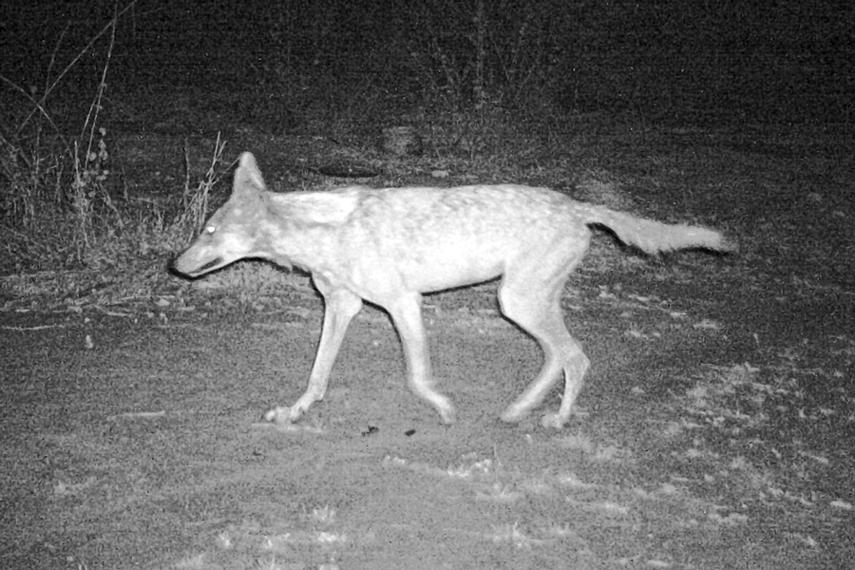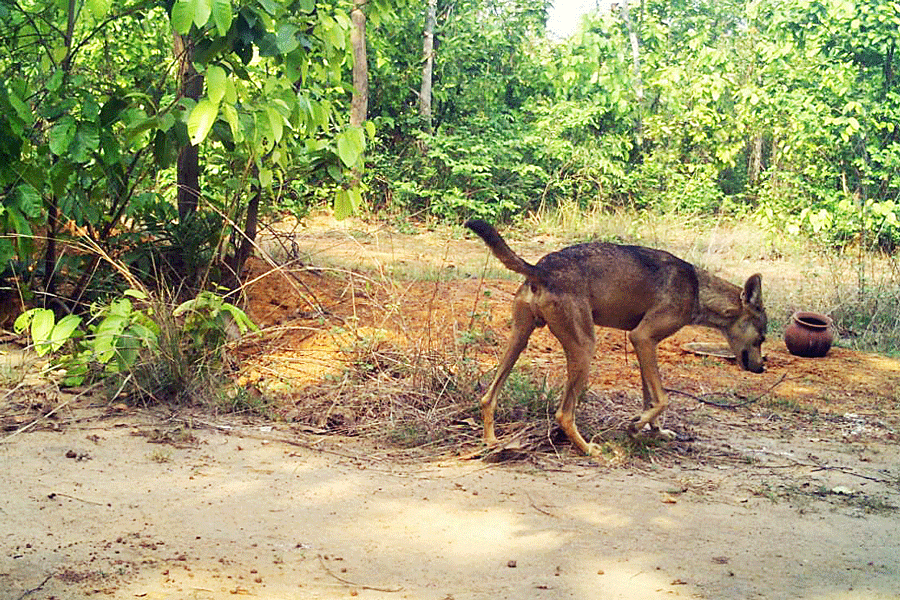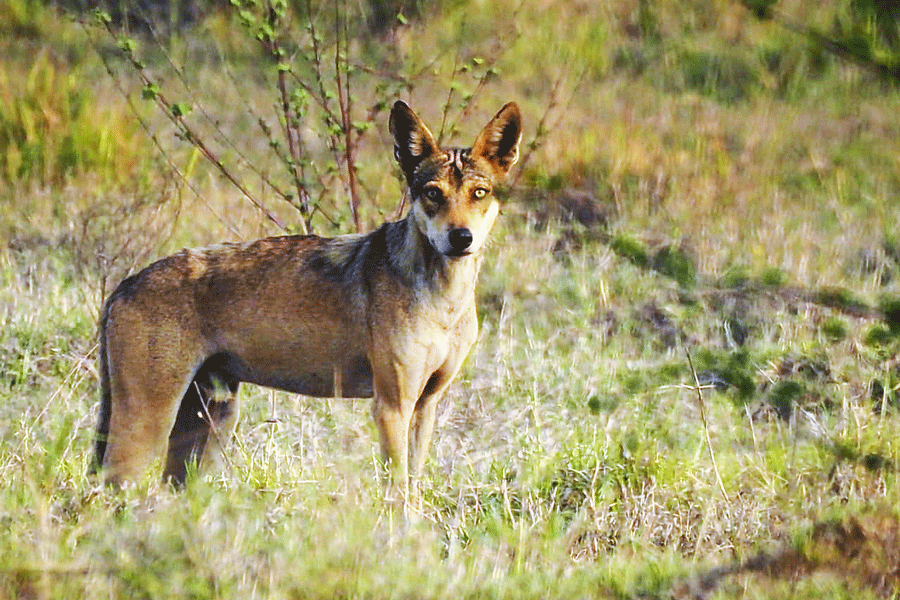Trap cameras installed in a small forest in Paschim Bardhaman less than a month ago have captured several images of wolves.
The animals, identified as Indian Grey Wolves, are believed to be part of a pack whose presence has been known to foresters and wildlife enthusiasts. But the camera images are the first step in what they called a rare formal documentation of a population of wolves in Bengal.
Two sets of trap cameras were installed in the forest near Madhaiganj village, around 25km from Durgapur town, in May-end.

Trap camera images of wolves believed to be part of the same pack in Paschim Bardhaman. Picture courtesy: Durgapur Wings
A local NGO has set up the cameras as part of a project funded by the Wildlife Trust of India (WTI).
“Both sets have been set up at strategic locations near water bodies. The pictures captured so far are of adult males, adult females and sub-adults. Most pictures were captured around dawn or dusk,” said Arkajyoti Mukherjee, secretary of Durgapur Wings, the NGO behind the project.
The findings of the project will help in estimating the population, now believed to be around 10, and taking conservation measures, in association with villagers.
“Besides small mammals found in the forests, the wolves often prey on goats and lift poultry from the nearby villages. So far, there have not been any retaliatory killings. But we cannot take chances. We have conducted awareness campaigns in the villages. We will keep doing that and take other steps for conflict mitigation,” said Mukherjee.

Trap camera images of wolves believed to be part of the same pack in Paschim Bardhaman. Picture courtesy: Durgapur Wings
Buddhadeb Mondal, divisional forest officer of the Durgapur division, said: “There is a pack of Indian Grey Wolves in the forest. But we have little knowledge about the pack. We are waiting for the report from the NGO. Based on their findings, we will move forward”.
The habitat and distribution of hyenas, wolves and some other wild animals, said to be found in the forests of south Bengal, is undocumented and the extent of their distribution is largely anecdotal, said forest officials.
They are usually found outside reserve forests and national parks — areas outside the ambit of census and similar exercises that focus on tigers, elephants and rhinos.
In Paschim Bardhaman, the pack has been spotted in a range of forest that spans over 100sq km.
A study, commissioned by the state forest department and done by the Zoological Survey of India (ZSI), has “gathered ecological data on the distribution and population assessment” of small mammals like hyena (Hyaena hyaena), Indian wolf (Canis lupus pallipes), golden jackal (Canis aureus) and wild boar (Sus scrofa) in the forests of south Bengal, except the Sunderbans.
It was commissioned in 2019 and its report was tabled last year. It was delayed by a few months because of the pandemic.
Apart from the ZSI study, there has been no scientific documentation of any of these animals in south Bengal, said forest officials.
Wolves and hyenas have in the past been spotted in the forests of Bankura, Jhargram and Purulia. The forests here are interspersed with human settlements, which also implies the possibility of man-wild conflict.
“There is a resident population of wolves in Paschim Bardhaman. The pack is not very big. But we need some information in order to take conservation measures. The trap cameras will help in getting the information,” said Debal Roy, principal chief conservator of forests and chief wildlife warden of the state.
Protected under Schedule I of the Wildlife Protection Act, 1972, grey wolves are found across peninsular India in scrub forests, grasslands and arid areas.
A WTI spokesperson said the trap cameras in Paschim Bardhaman were part of a “rapid action project”.
“These projects are one of the Wildlife Trust of India’s longest running projects and aim to provide immediate support to alleviate urgent threats to wildlife in partnership with local grassroots individuals. This project plans to implement measures to mitigate livestock predation by wolves,” said the spokesperson.
